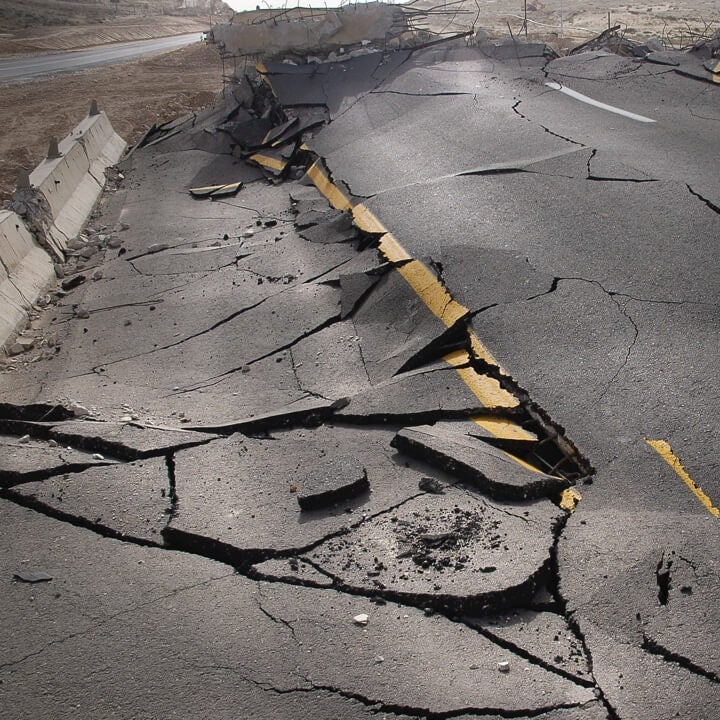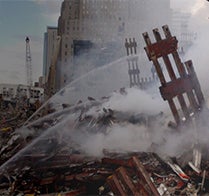Dynamic Risk
For nearly 20 years, Moody's RMS terrorism models have been updated regularly to reflect the latest threat landscape. The models enable application of various reinsurance programs and TRIPRA.
Probabilistic Modeling
Gain a complete view of risk with a comprehensive solution that provides a full range of possible attacks of varying severity and likelihood.
Manage Accumulations
Evaluate exposure concentrations within your book using a database of global terrorist targets and accumulation tools.
Support Reporting
Produce losses and results necessary for Lloyd’s RDS, rating agencies such as AM Best SRQ, and government reporting including US TRIP data call.
Clear Insight
Obtain a clear competitive advantage in risk selection, risk transfer, and capital management. Covers property (including business interruption) and human exposures.
Spotlight

Related Products



Beyond Terrorism
(Re)insurers that offer affirmative terrorism coverage or are otherwise exposed to terrorism may be interested in a number of other Moody's RMS solutions to help gain a more complete view of risk.
Moody's cyber solutions
Cyber risk also involves human actors with the intent to disrupt or cause loss. Moody's Cyber Solutions include a comprehensive cyber risk model, a standardized cyber data schema, configurable analyses, results, and reporting.
Moody's LifeRisks
Moody's LifeRisks® is an SaaS solution used in both the life and health and pension markets to model excess mortality and longevity risk. In some regions, terrorism is included in the excess mortality model.

Moody's cost severities
For terrorism and other risk and accumulation modeling, Moody's offers the U.S. Workers' Compensation Cost Severities, which are updated regularly to convert casualties into financial losses.
Industrial facilities
Better understand the unique nature of industrial and energy facilities with models customized for these distinct exposures.
Marine cargo models
Estimate potential losses and risks using a vulnerability model custom-tailored to the uniqueness of the cargo and specie lines of business.

Human casualty earthquake model
Workers Compensation insurers in the U.S. cannot exclude terrorism or other catastrophic risks. The Moody's Earthquake Casualty Model can model losses due to injuries and fatalities arising from earthquakes in the U.S., China, and Japan.
Location Intelligence API
Gain better underwriting perspective with instant access to the world’s best catastrophe insights.
Resources

Terrorist Attack in Istanbul: November 13, 2022
Since May 2009, I have regularly been invited as an expert speaker on terrorism risk at the NATO Center of Excellence for the Defense Against Terrorism (COE-DAT) in Ankara, Turkey. This major security training center is situated in Turkey’s capital, because although all NATO countries are exposed to Islamist terrorism, Turkey also has high exposure to separatist terrorism. The separatists in question are Kurdish, originally nomadic people, who aspire ultimately to have their own independent h...

Pool Re: Expanding U.K. Terrorism Insurance Coverage
I recently attended the annual Pool Re terrorism insurance market meeting in London on October 11, the first to be held in person since 2019. Any one of the presentations would have made the travel to London Bridge worthwhile. Prior to entering the Glaziers Hall venue on the South Bank of the River Thames, I stopped at Brood in Borough Market, formerly known as Café Brood, whose staff had acted so heroically in the London Bridge terrorist knife attack of June 3, 2017. The London Bridge incident hap...

Death of al-Qaeda Leader Ayman al-Zawahiri
Two years after 9/11, in 2003, I was invited, as a prominent terrorism risk analyst, to attend a Muslim-Western relations dialog meeting hosted by Prince Hassan of Jordan at the high-security Amman Marriott Hotel. Among the dignitaries was an Egyptian man who once had shared a Cairo prison cell with Dr. Ayman al-Zawahiri. As the chief strategist of al-Qaeda, al-Zawahiri was a central figure in masterminding the terrorist campaign against the U.S. and its Western allies. Unlike risk from natural hazards...

Twenty Years Since 9/11: Living With an Ever-Present Threa...
It was 8:46 a.m. local time on September 11, 2001, when a hijacked American Airlines Boeing 767 was flown directly into the North Tower of the World Trade Center in New York City. By 10:03 a.m., hijacked planes had crashed into the World Trade Center South Tower and the Pentagon, Washington D.C. Hijackers on a fourth plane were overpowered by brave passengers, and it crashed in a field in Pennsylvania. Within days, the identities of the terrorists belonging to the al-Qaeda terrorist organization, were revealed. ...

Non-damage Business Interruption Insurance: Learning From ...
The hospitality industry worldwide is being battered – not by a physical force of nature like an earthquake or hurricane but by an “invisible” coronavirus, which causes no physical property damage. Projections show 2020 to be the worst year on record for hotel occupancy, even worse than during the Great Depression. Providing non-damage business interruption (NDBI) coverage explicitly for pandemics is a major challenge for insurers. Limited capacity is a constraint; to overcome this problem, the market i...

New Ways of Modeling Property-Liability Clash and Uncoveri...
Natural disasters and other large catastrophes can trigger huge economic losses potentially among multiple insurance lines. RMS, in collaboration with research partner Cambridge Centre for Risk Studies at University of Cambridge, have developed eight template scenarios that model liability clash triggered by natural or man-made catastrophic events. This research was primarily focused on property–liability clash modeling and was the continuation of the two-year Global Exposure Accumulation and Clash (GEAC) pro...

RMS September Update: New HD Models for Europe, New Zealan...
After recently launching new High Definition Models™ during August, we are delighted to announce that clients using RMS® Risk Modeler™, powered by RMS Risk Intelligence™, now have access to three additional HD Models™ covering new perils and regions in Europe, New Zealand, and the U.S.: Europe Severe Convective Storm HD Models: Comprehensive coverage of all sources of loss including hail, straight-line winds, and tornado risk for 17 countries, comes with large Pan-European event sets, and is fully integrat...

Terrorism Risk During the COVID-19 Pandemic
While countries across the world continue to tackle the global coronavirus pandemic, the terrorism threat landscape has seen changes. Networks of various ideologies have been looking to exploit insecurities around the virus, either to enhance their organization or to spread panic by advocating terrorist attacks. For counterterrorism practitioners surveilling the main threat actor groups, online propaganda messages have been posted by right-wing extremists (RWEs) to their followers, framing the pandemic as “di...

Terrorism Risk for California Workers’ Compensation
The terrorism landscape has changed significantly since 9/11. There is a visible shift from large-scale attacks to a growing number of lone wolf attacks. Many believe there has not been a major terrorist event in the United States post 9/11, but one should not overlook the near-misses in the recent past which could have caused massive losses such as the 2016 New York-New Jersey bombings. The unpredictable and catastrophic nature of terrorism led to the emergence and continued reauthorization of the U.S. Terro...

Re-evaluating TRIA
At this year’s RMS Terrorism Risk Summit, we focused attention on the U.S. landscape. The main issue these days in terrorism insurance discussions relates to the Terrorism Risk Insurance Protection and Reauthorization Act (TRIPRA), which will expire at the end of December 2020 if not reauthorized. This important legislation is also known by other acronyms including TRIA (Terrorism Risk Insurance Act) and TRIP (Terrorism Risk Insurance Program). In discussing the U.S. federal backstop for certified acts of terror...

Managing the Multifaceted Terrorism Threat: RMS Terrorism ...
Despite the paucity of large-scale terrorism attacks in North America, the multifaceted terrorism threat in the U.S. continues to be a significant one that must be managed by the (re)insurance risk management industry,according to experts at this year’s RMS Terrorism Risk Summit. The theme for this year’s summit, held in New York on September 25, focused on the multifaceted terrorism threat landscape in the U.S. and how the peril can be managed by the insurance industry. Wh...

Better understand your terrorism risks












